There are those rare entities who examine and understand the importance of past practitioner’s efforts and apply their findings in a deliberate and thoughtful strategy to advance their own practice and research. These insightful artists/researchers apply findings in a format that creates a unique voice that extends inquiry. This is healthy research. Through spending numerous hours looking at and reading comics (alternative/cursory to mainstream), exploring the Chicago Imagists, examining the archives of the Art Institute and editing the comics section of Lumpen Magazine, Joe Tallarico has established a healthy practice that illustrates the ongoing importance of figurative elements in visual art via a highly stylized portraiture that extends our understanding of color application and theory into a realm that is distinct to the present. This week the COMP Magazine ran up to Bucktown to discuss with Tallarico his collecting habits, the importance of looking at the past, his support of Chicago’s alternative comics community and future items in progress leading him into the New Year.
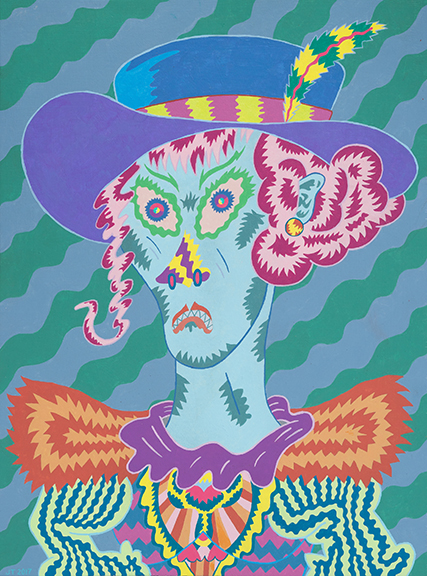
You are from out east, Pittsburgh area, and initially drawn to Chicago due to an interest in the comics and the Chicago Imagists. Let’s backtrack, perhaps we can start with you identifying what prompted your initial creative pursuits?
When I was really young I was always drawing because of my fascination or possible childhood addiction to cartoons and comic strips. I have memories of sitting for hours in front of Looney Tunes and Scooby Doo. I remember my Mom would buy me these dollar VHS tapes at Pharmor of public domain cartoons that were filled with old Fleischer Bros. cartoons like Popeye, Bugs Bunny, and early Disney cartoons like Skeleton Dance that I would just watch on repeat because they were so mindblowing to me. I also would copy from the sunday funnies and Disney Adventures. (I realized later that the Ducktales comic strips in Disney Adventures were reprints of old Carl Barks duck comics.) I loved it all new or old and collecting anything related like toys and video games. I also loved Spider-man and X-men comics that I would beg for off of the spinner rack at the grocery store. The only thing I ever aspired to be as a kid was a professional cartoonist or animator. I took as many classes at the local art center as I could, a lot of which were life drawing, which continued through high school and college which eventually really lead me into an interest in fine art and art history and how they can sometimes be intertwined with comics and cartoons. I moved to Chicago because some good college friends I went to MICA with were moving here and I wanted a big city but I didn’t think I could swing New York or LA. I was also really into Chris Ware and the Chicago Imagists who some of my professors in college turned me onto because I was making these large animation cell paintings that were back painted and Henrik Drescher and Warren Linn who were my professors showed me a bunch of Hairy Who stuff. It was just a huge epiphany that paintings could be made in this manner that wasn’t using it as appropriation and I wanted to be in a place where this type of work was not only accepted but encouraged, although when I got here it felt like there was a general feeling that “Chicago Imagism” was passé but that never really bothered me and that feeling has certainly changed since.
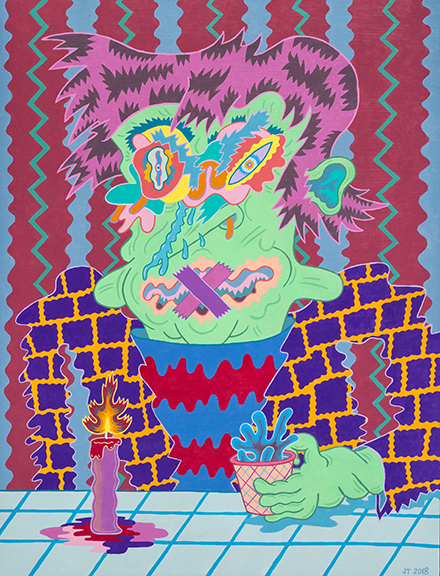
Late last year you produced an ambitious exhibition, Passing Glances, for the Jean Albano Gallery in River North. The exhibition consisted of portraits in a style informed by artists who have worked in the city for the past 60 years. Can you walk us through the process for assembling and producing this project?
Yeah, that was my first solo show of paintings. Jean had seen the animation I had produced for the Depaul Museum’s Afterimage show a little while back and asked If I wanted to be in group show and I said “sure thing” and she has represented me since. I was really flattered and honored to show there because Jean has been interested in and shown so many of my favorite Chicago artists for so long now including the entire Wirsum family and Gladys Nilsson as well as Jules Feiffer who is just a cartooning legend. The process was that I basically cancelled my social life and painted almost every night for a year and a half. It was easily one of the most stressful years of my life. It takes me a while to make a painting and I have a full-time job at the Art Institute of Chicago where I’ve worked as a photographer for the last 14 years so I really had to buckle down and focus.
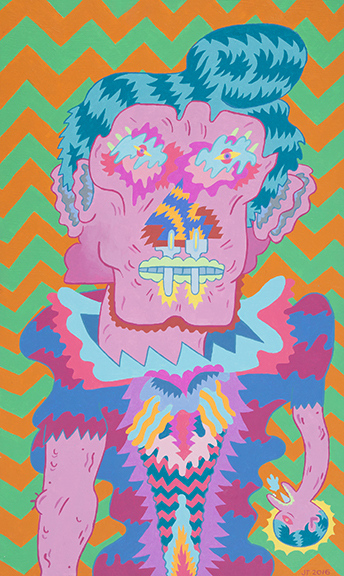
You are also a collector of obscure music, alternative comics and art. There’s been a long history of artists collecting and regular discussions on how this habit impacts their production. Do you see this? Can you describe what you find interesting enough to collect? And, how it impacts your artistic production?
I’ve been collecting toys, comics, books, records, art and random junk since my childhood years in Pittsburgh. I had some friends that were into jazz and soul music and early blues and folk in high school. We would wake up early and hit flea markets or go to Jerry’s records a couple times a month. It was something to do in a town that seemed pretty boring at the time. My friend had a player piano in his basement and we would buy piano rolls and edison cylinders and listen to old timey music and scan the papers for estate sales. I think we knew about Crumb and collecting but it was really about the music and amassing as much of it as possible and educating yourself on what makes a record good but also finding things that are unheard of. I found out later that a lot of artists kind of curate their own collection of stuff and look at it as influential to their work so I started considering that in college and started looking for antiques while looking for records. It’s a way to build and curate a personal art collection when real art collecting seemed so inaccessible to a twenty-something with no money. I find a lot of forms of Japanese toys interesting or things that were super expensive as a kid I could later get for really cheap like nintendo games or transformers. Anything cartoon based is cool to me really or things with bright colors and patterns. I love Mold-a-rama figurines you can find in Chicago pretty easily. I also love spending time in museums and how they consider objects for acquisition and I am lucky to work at one.
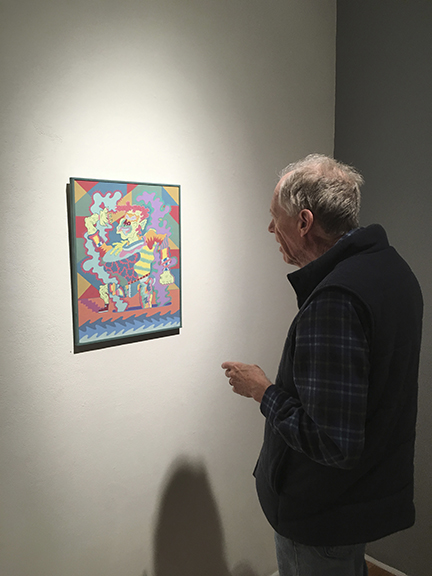
at “Glorp Creek”, Jean Albano Gallery, Chicago, 2018
You are the comics editor for Lumpen Magazine. Recently, there was a launch of a bound collection at Co-Prosperity Sphere in Bridgeport. In this, you worked with a number of artists (Onsmith, Deb Sokolow, Paul Nudd, etc.). What prompted the assembling of this collection? What did you hope to convey in this effort?
I’ve been the comics editor for Lumpen magazine for 10 years now. I think it just started by meeting Edmar at some crazy party at the co-prosperity sphere in Bridgeport and showing interest in giving space to weird art comics in Lumpen magazine. It is kind of like curating things for a gallery but keeping in mind that some of the work looks better on a page at arms length than on a wall and these types of comics or art pieces need to be exhibited in this manner. I’m also a curator sometimes of physical exhibitions most recently in the Ryerson Library at the Art Institute of Chicago and I also co-curated a few shows with John Maloof at his Miishkooki gallery that was in Skokie. Most of the artists in Lumpen are from Chicago but a few are people from abroad that I’ve met or people have put me in contact with. I get submissions somewhat often as well. We had sections of comics in the regular issues of Lumpen until we got the idea for an “all-comics” issue which I think people really liked so we have been doing it somewhat annually. The past couple years we discussed the possibility of it changing into a book format with double the page count and decided to go for it.
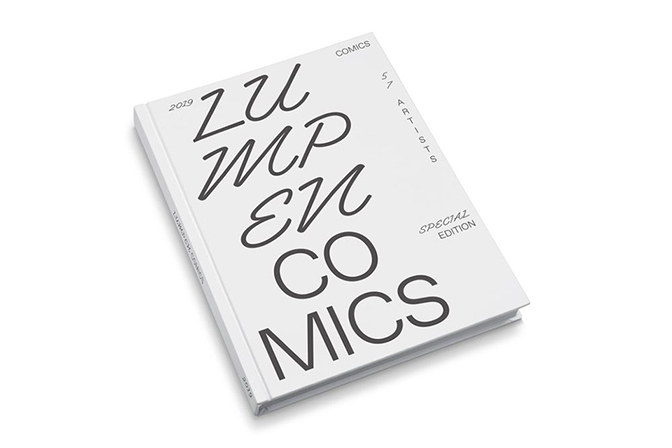
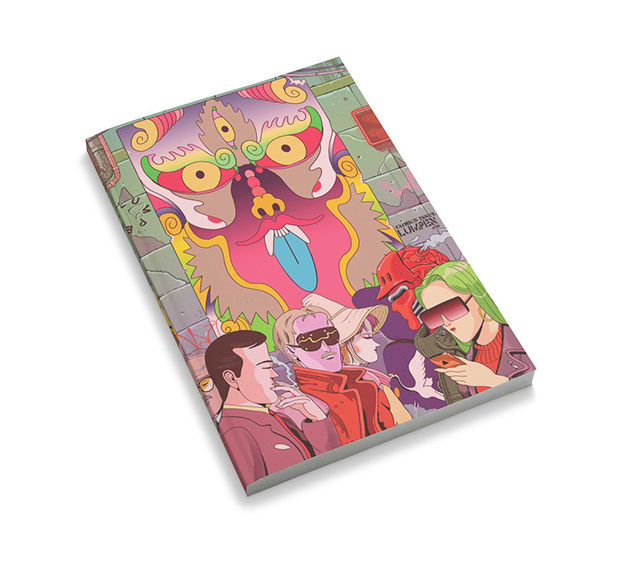
Can you walk us through your conceptual and tactile approach to creating paintings and other works?
Lots of doodling and thumbnails and sketchbook work. I think this process comes from comics method of penciling and then inking a page and then adding color. It’s just a way of working that I learned at an early age I’ve just carried with me. I will do some writing in my sketchbook too, whether it be cooking recipes or just general word-play. I’d like to loosen up a bit and maybe work in a more muted color palette. My eyes really hurt after a year of making really bright paintings and the world right now seems like it’s turning into a greyer place. I guess there are different themes like dreams and body morphology. I have alopecia which caused my hair to fall out when I was 20 years old and no one could tell me why and I thought I was dying, which was not the case, but after it happened I still had this mental image of myself with hair. Looking in a mirror was like looking at a stranger and it was terrifying and surreal but it also makes you hyper aware of what makes bodies and faces look the way they do and what things like hair, age, hormones, weight, skin and things change and affect how people are perceived by others.
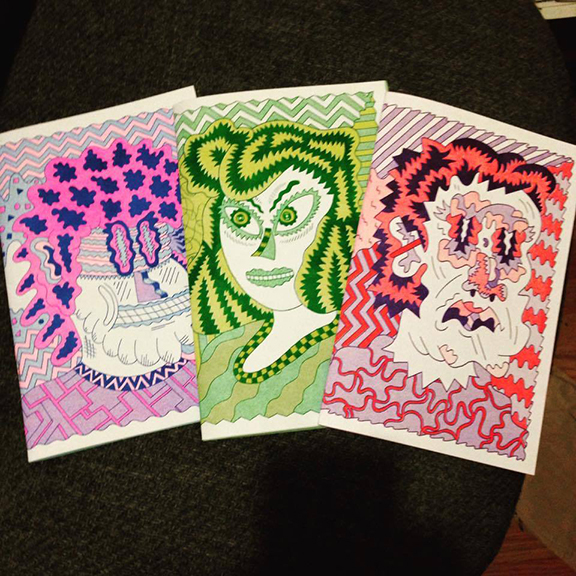
What do you value most in your various aesthetic practice?
Perfectly clean lines, perfect compositions, engaging colors. Making an image that is interesting to look at; all of which I think I’m only moderately good at. I’m really good at focusing on what I think are fatal mistakes. The work I’ve made that I personally like people seem to like the least and the work that I want to burn in a fire usually gets the best feedback. I’m still trying to figure out why this happens.
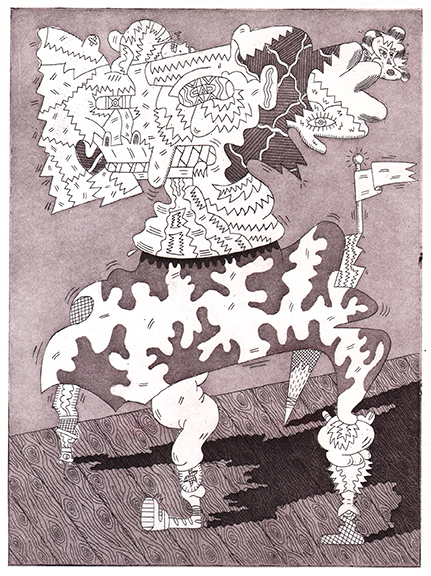
What’s the plan for the remainder of 2019? Studio projects? Editing more comics for Lumpen? Any adventures in collecting? Or just trying to decompress
I just made my first intaglio aquatint etching with Angee Lennard of Spudnik press for their 2019 artist series which is up for auction at their benefit in a few weeks and I have some paintings in a show at one river school in Lincoln Square on Oct.11th curated by my friend Sarah Halloway. My dayjob has been very demanding lately so trying to conserve energy for that but have some ideas for another show eventually. I think it might involve spending more time making etchings and drawings because I found the process pretty relaxing and feel compelled to concentrate on drawing more than I have after focusing on painting for so long.
For additional information on the aesthetic practice of Joe Tallarico, please visit:
Jean Albano Gallery – http://jeanalbanogallery.com/artists-z-n/joe-tallarico/
Lumpen Comics Book – https://underthecounterculture.bigcartel.com/product/lumpen-comics-book-shipping-in-us-only
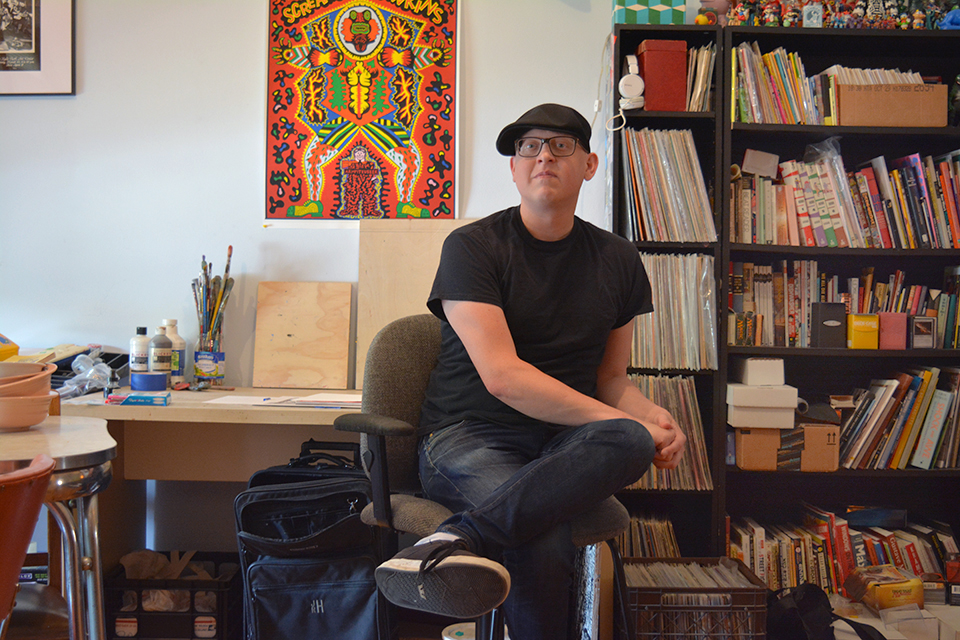
Writing and portrait by Chester Alamo-Costello


